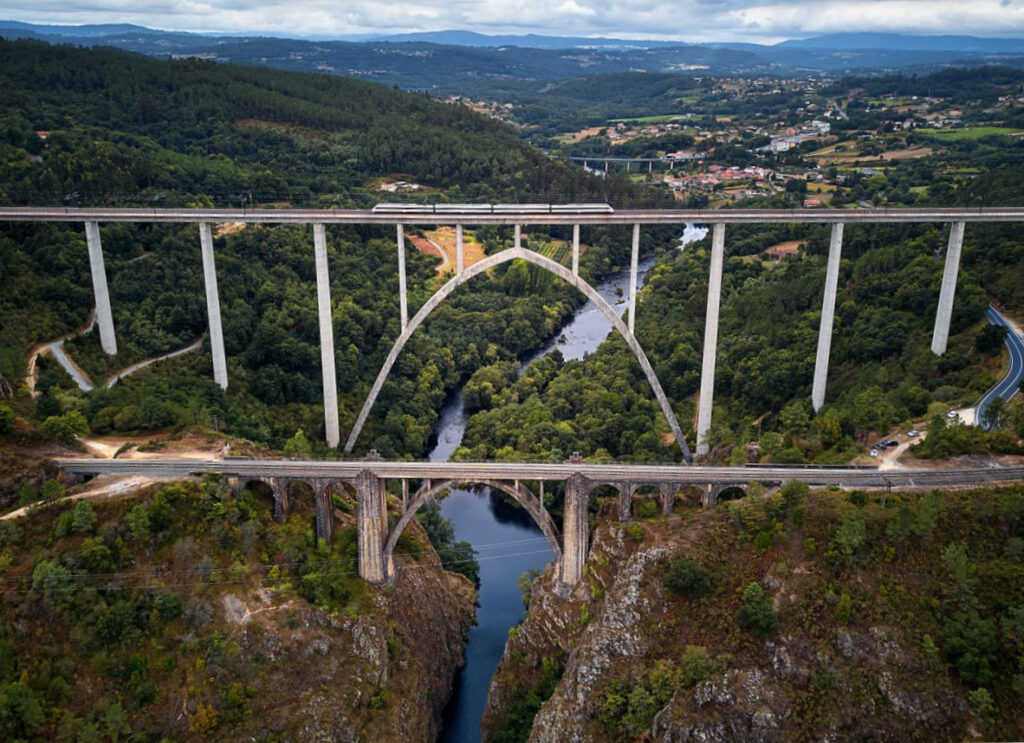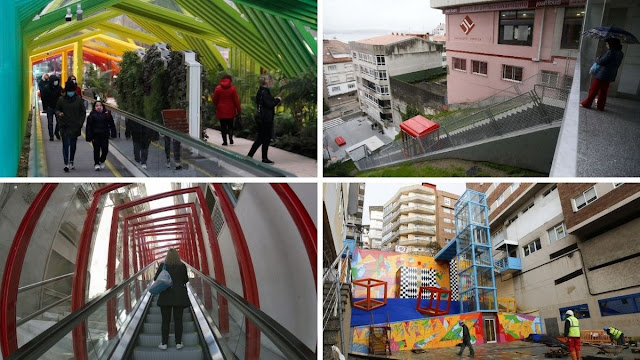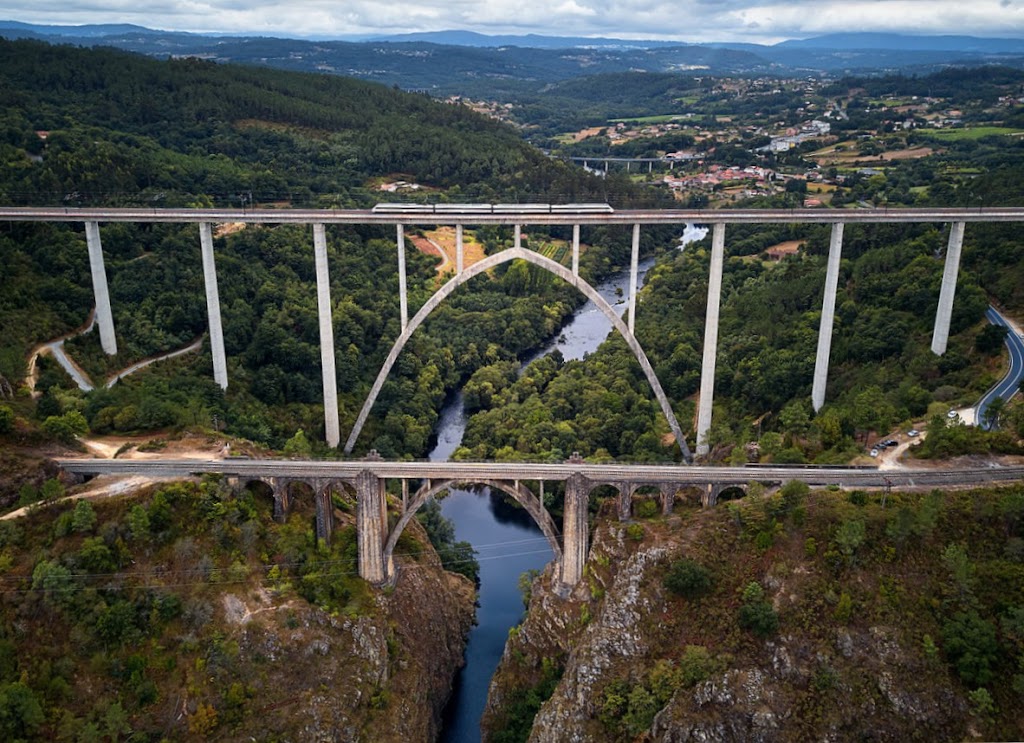With the beginning of the second decade of the 21st century and the end of the pandemic, the European Next Generation funds for innovation, the 2030 Agenda for sustainable development and the arrival of the AVE mark a new time of opportunities for Galicia, one of the most aged regions in Europe.
The arrival of the High Speed train to connect Galicia with Madrid means a connection in just over 2 hours with an urban area of more than 6 million inhabitants, more employment opportunities in the private and public sector, tax benefits to attract companies and a great cultural, commercial and leisure offer. As well as the proximity of the Adolfo Suárez Airport with a large flow of international flights.
This, while facilitating the increase in tourism from the rest of the Spanish State, also means an increase in the Galician emigrant population to Madrid, students or workers who in many cases find it easier to travel to that city than to move between cities and towns in Galicia, both in time and cost.
The capital factor of Madrid, which absorbs companies, public employees, etc., prioritized the connection of the AVE with Galicia, before modernizing and expanding the Galician internal railway system, not even between all the cities (only those of the Atlantic Axis).
In addition, the new High Speed route has fewer stops in the main county capitals, which forces people to travel by road to the stations, either by bus or by their own vehicle. Something that does not happen in other European regions.
The worst of all is that the AVE took 30 years to reach Galicia due to the high economic costs and the complex infrastructure in the connection with the Meseta. Not to mention the temporary and precarious nature of the works in the construction of sections such as Lubián and the serious accident that occurred in Angrois in 2013, due to causes such as insufficient signaling and deficiencies in the safety system in the speed changes.
However, Galicia still does not have a commuter train service like other European regions, which should be the priority. First, by connecting the cities and main regional capitals and then with the outside world. And not only to Madrid, but also to the Cantabrian corridor (Asturias, Cantabria, Basque Country, France) and the Atlantic corridor (North and South Portugal).
The Galician orography makes the speed of trains difficult and the territorial dispersion forces regional stations to be abandoned to reduce stopping times. In addition, the abundant natural heritage increases the environmental impact of the infrastructure. Therefore, the most logical thing would be to have a modern commuter rail system, managed in Galicia, with interchanges located at strategic points such as O Porriño or A Gudiña, to connect it with the other Peninsular and European High Speed Networks.
However, political decisions do not take into account adequate territorial planning and, in addition to favouring the centralism of Madrid, we are currently waiting for the construction of the AVE with Oporto and Lisbon, which will take many years to complete (it is estimated that it will be finished in 2030).
And not only that, the environmental impact of the AVE viaducts to attract tourism, sometimes passing close to population centres or natural spaces, is met with the abandonment of old stations and the unfulfilled promise of transforming the old tracks into a network of greenways.
Another fact to bear in mind, unthinkable in other countries, is that there is no rail connection with the Galician airports. The only way to get there is again by bus or private vehicle, which makes mobility and timetables difficult and often makes it worthwhile to go to the airports of Madrid or Sá Carneiro in Oporto, which have better connections. In this sense, the old infrastructure of Lavacolla airport, in Santiago, could be used as a railway station.

Better urban planning: the unique cities.
The Galician urban system is polycentric, with three main urban centres on the Atlantic axis (Vigo-Pontevedra in the south, Coruña-Ferrolterra in the north and the Compostela Area in the centre). The first two have important ports and all three have their own airport. Each urban area, as well as each port and airport, are decentralised following a territorial model of unique cities with specialised areas. Thus, the majority of public entities and the university are concentrated in the Compostela area, for example. Vigo has the automotive industry and related sectors and A Coruña has the textile sector related to the multinational Inditex.
The metropolitan areas of the Atlantic Axis must be well connected to each other, to ports and airports and to the other 2 urban areas inland (Lugo and Ourense) for freight and passenger rail transport. And in addition to interurban connections, in terms of optimal mobility in the metropolitan areas, it would be interesting to study the implementation of Metro lines (light or conventional). Other medium-sized cities on the peninsula such as Oporto, Vilanova de Gaia, Málaga or Granada already have a metro, while in Galicia it is still non-existent.
Galician cities must also improve internal mobility with electric trams and sustainable transport (electric buses). This is something that is already common in other European cities of a similar size, and it would not be new in Galicia either, since Vigo and A Coruña had trams in their time. In short, an ideal plan for Galician public transport would be to have electric trams and buses in the cities, a metro in metropolitan areas, commuter trains between cities and regional capitals and a high-speed train to connect Galicia with the outside world.
Currently, the cities themselves are returning their spaces to pedestrians, to the detriment of vehicles. This improves their quality of life while boosting local commerce. Obviously, the pedestrianisation of urban centres must be done with good transport management, providing parking spaces that discourage private transport and efficient public transport routes.
The rehabilitation of historic neighbourhoods and technologically smart cities that attract innovation would increase services and employment through the trade of local products and also foreign investment through franchises. Cities need to attract companies to increase employment and reduce demographic ageing, as well as promote local products, for example by opening urban markets, as is done in many French cities.
In this regard, it should be noted that transport salaries must be adequate so as not to harm local trade. However, the precariousness of the transport sector with its low commercial costs means that multinational companies can sell online at very low prices with which local businesses cannot compete.
Regarding notable urban development projects, the city council of Pontevedra has been working for years on the pedestrianisation of the city centre, which favours mobility and the proliferation of franchises and small local shops. Santiago de Compostela is characterised by having a large number of green areas where children and adults, above all, improve their quality of life. A Coruña has the longest seafront promenade in Europe (13 km) and is currently humanising its port. Something that Vigo had already done, and which now stands out for improving mobility in the neighborhoods through the installation of urban elevators and escalators.

(photo: farodevigo.es)
Better regional planning: the merger of municipalities.
Galician cities must be well connected to the main regional towns. In addition, these regional capitals must be well connected to the parishes, in order to avoid rural depopulation. Although this does not solve all the causes of the abandonment of rural areas, it contributes to shorter journeys to work in a town with a service centre and to the population not deciding to emigrate.
This requires good territorial planning based on the merger of small municipalities (concellos) and the abolition of provincial councils, providing all basic services and powers to the regions. In this way, the number of mayors would be reduced and, consequently, caciquism and political corruption. In addition, having larger and more populated municipalities would facilitate financing and the attraction of companies and small industries, taking advantage of Next Generation funds and, therefore, attracting jobs, which is the most important thing to retain the population.
Consequently, the comarcas would carry out the work of joint associations where services would be shared between the municipalities that make them up. But merging two concellos does not mean centralising all the services of the comarca in the largest one, leaving the small one without population, but the infrastructures would be shared and the services would be decentralised. The difference is that the mayor and the governing group would be the same for both municipalities. In addition, all the parishes would continue to have each representative (mayor or pedáneo) elected by the residents.
An example is the comarca do Deza. This comarca covers 5 concellos, 3 of which have less than 3,000 inhabitants and an ageing population. The smallest, Dozón, has just over 1,100 inhabitants, an industrial estate with only one factory and a mayor who has been in power since the 1990s. It is only 15 minutes by motorway from Lalín, which has a larger industrial area where companies share all the infrastructure. On the other hand, we have the municipality of Silleda (around 8,800 inhabitants) which has two main population centres, Silleda and Bandeira. Bandeira is not a municipality and has around 860 inhabitants, but it has all the services and both are close and well connected.
Large infrastructure projects, such as industrial parks or train stations, would be distributed based on the ideal location determined by the governing group of each merger. But, at the same time, it would avoid having small municipalities with a small population that hardly demand changes and improvements in government. In this case, in the municipality of A Golada (around 2,200 inhabitants), due to the lack of people, only two political parties stood in the last elections, one of them independent and led by a returned emigrant.
Similarly, regionalisation would entail the suppression of provincial councils, which are mere personnel offices that operate mostly in the provincial capitals and not in the municipalities. A public institution that hires as if it were a private company, and not even the president is elected through its own electoral system.
However, the mancomunidades or regional agencies would offer closer and more useful services to the councils and parishes. An example are the Agricultural Offices and the Local Development Groups, which have much less staff and provide administrative management and business advice, and have their offices near rural areas.
Interactive map of the regions and municipalities of Galicia.




